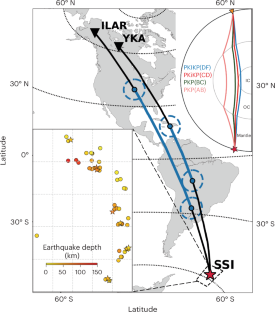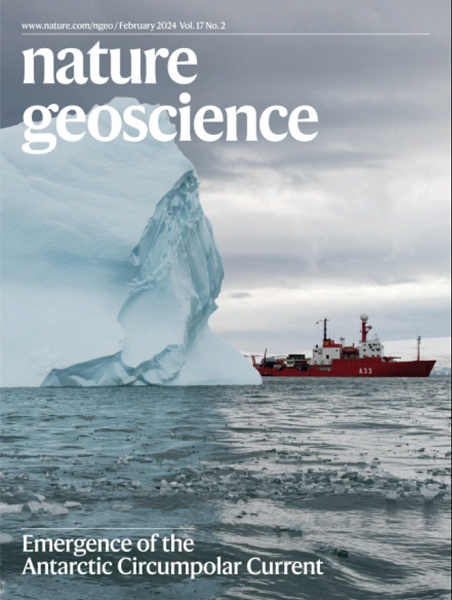Annual-scale variability in both the rotation rate and near surface of Earth’s inner core
IF 15.7
1区 地球科学
Q1 GEOSCIENCES, MULTIDISCIPLINARY
引用次数: 0
Abstract
The inner core has been inferred to change its rotation rate or shape over years to decades since the discovery of temporal variability in seismic waves from repeating earthquakes that travelled through the inner core. Recent work confirmed that the inner core rotated faster and then slower than the rest of Earth in the last few decades; this work analysed inner-core-traversing (PKIKP) seismic waves recorded by the Eielson (ILAR) and Yellowknife (YKA) arrays in northern North America from 121 repeating earthquake pairs between 1991 and 2023 in the South Sandwich Islands. Here we extend this set of repeating earthquakes and compare pairs at times when the inner core re-occupied the same position, revealing non-rotational changes at YKA but not ILAR between 2004 and 2008. We propose that these changes originate in the shallow inner core, and so affect the inner-core-grazing YKA ray paths more than the deeper-bottoming ray paths to ILAR. We thus resolve the long-standing debate on whether temporal variability in PKIKP waves results from rotation or more local action near the inner-core boundary: it is tentatively both. The changes near the inner-core boundary most likely result from viscous deformation driven by coupling between boundary topography and mantle density anomalies or traction on the inner core from outer-core convection. Earth’s inner core has both changed its relative rotation rate and deformed in the past few decades, according to an analysis of seismic waves recorded when the inner core occupied the same relative location owing to its changing rotation rate.


求助全文
约1分钟内获得全文
求助全文
来源期刊

Nature Geoscience
地学-地球科学综合
CiteScore
26.70
自引率
1.60%
发文量
187
审稿时长
3.3 months
期刊介绍:
Nature Geoscience is a monthly interdisciplinary journal that gathers top-tier research spanning Earth Sciences and related fields.
The journal covers all geoscience disciplines, including fieldwork, modeling, and theoretical studies.
Topics include atmospheric science, biogeochemistry, climate science, geobiology, geochemistry, geoinformatics, remote sensing, geology, geomagnetism, paleomagnetism, geomorphology, geophysics, glaciology, hydrology, limnology, mineralogy, oceanography, paleontology, paleoclimatology, paleoceanography, petrology, planetary science, seismology, space physics, tectonics, and volcanology.
Nature Geoscience upholds its commitment to publishing significant, high-quality Earth Sciences research through fair, rapid, and rigorous peer review, overseen by a team of full-time professional editors.
 求助内容:
求助内容: 应助结果提醒方式:
应助结果提醒方式:


